Lattice Training Log Part 15: Weeks 1 and 2 of Cycle 4. Lazy Fingers. Consistency vs Fun.
November 27, 2022
These were the weeks of Nov 14 and 21, the first two weeks of cycle 4. Both weeks followed the following schedule:
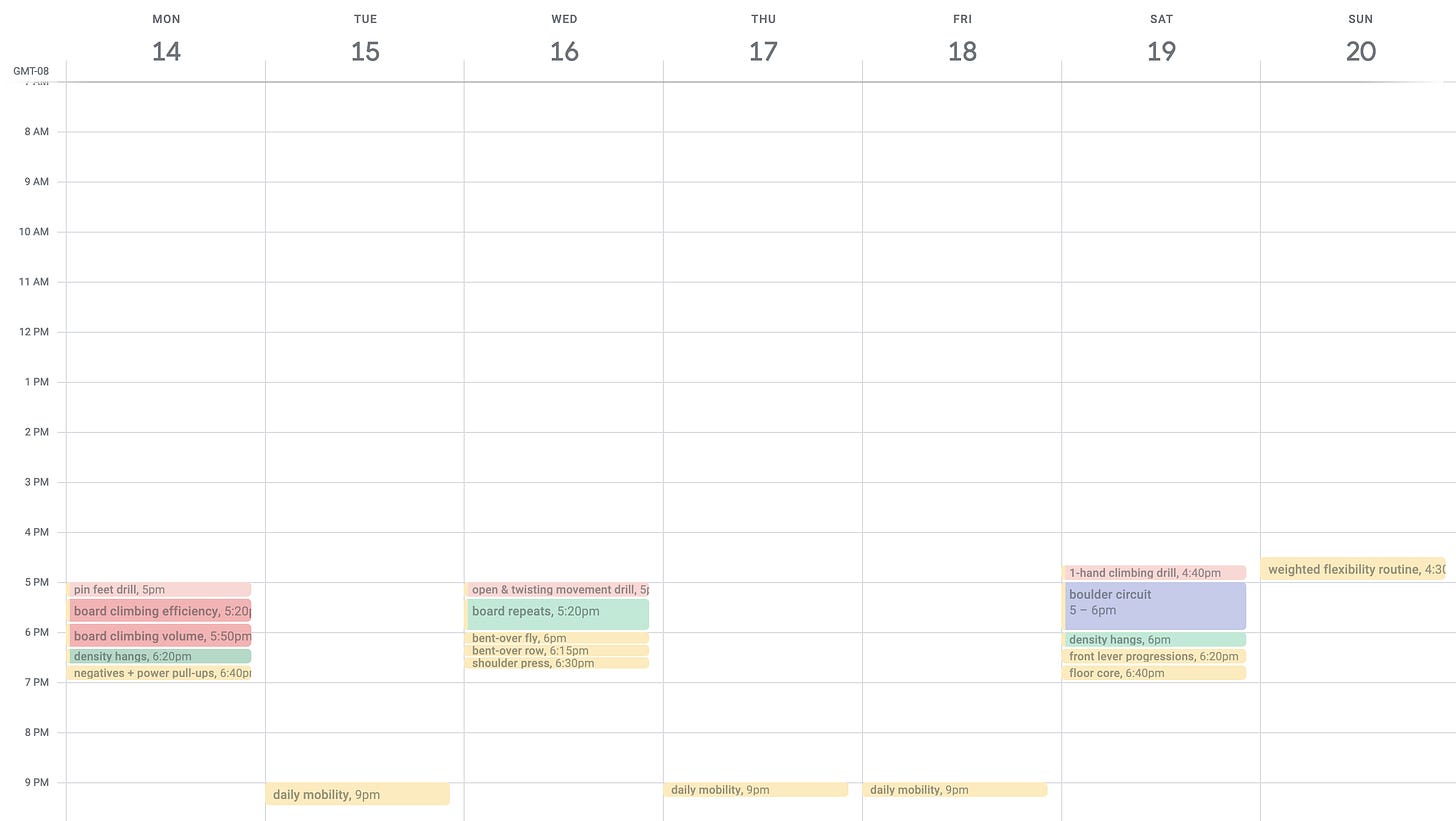
The details of the new workouts is in the spreadsheet.
lazy fingers
I’ve been trying to do density hangs, and this has confirmed for me something that I’ve had kicking around in my head for a while, ever since listening to the Ned Feehally episode of the Nugget.
I noticed that my climbing performance and my hangs didn’t really get negatively impacted by my index finger injury. In fact, the week after I first injured it, I still managed to hang bodyweight in front-3 for 7 seconds, which had been close to my max at the time.
I think that this is because my index finger is not actually engaging when I hang. I am noticing that my index finger doesn’t end up being hyper-extended at the PIP joint when I try to half crimp, and even if I consciously try to put it into that position, it gradually disengages.
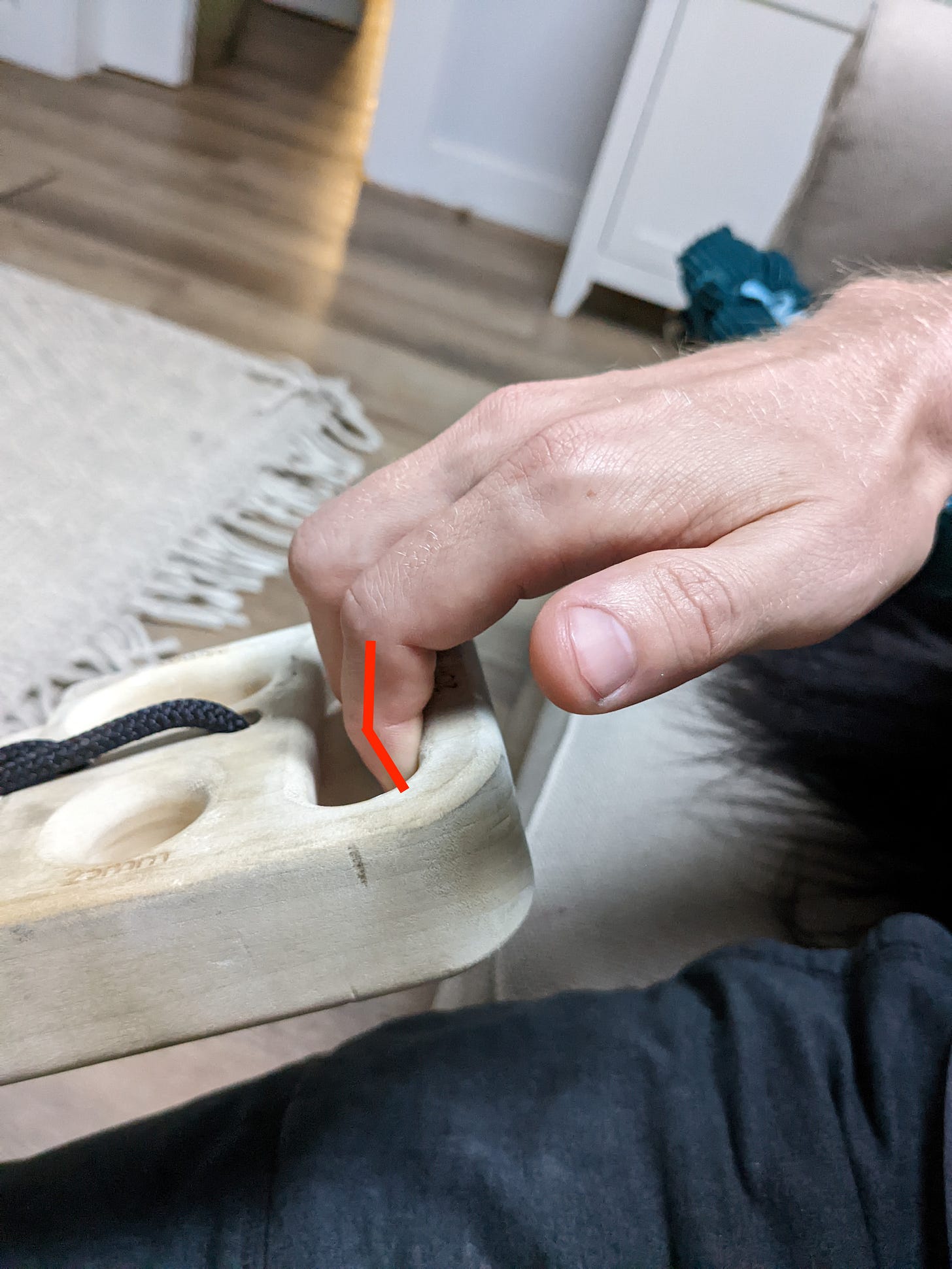
Overall, I feel the weight primarily going through my back 3 fingers, and down towards my elbow.
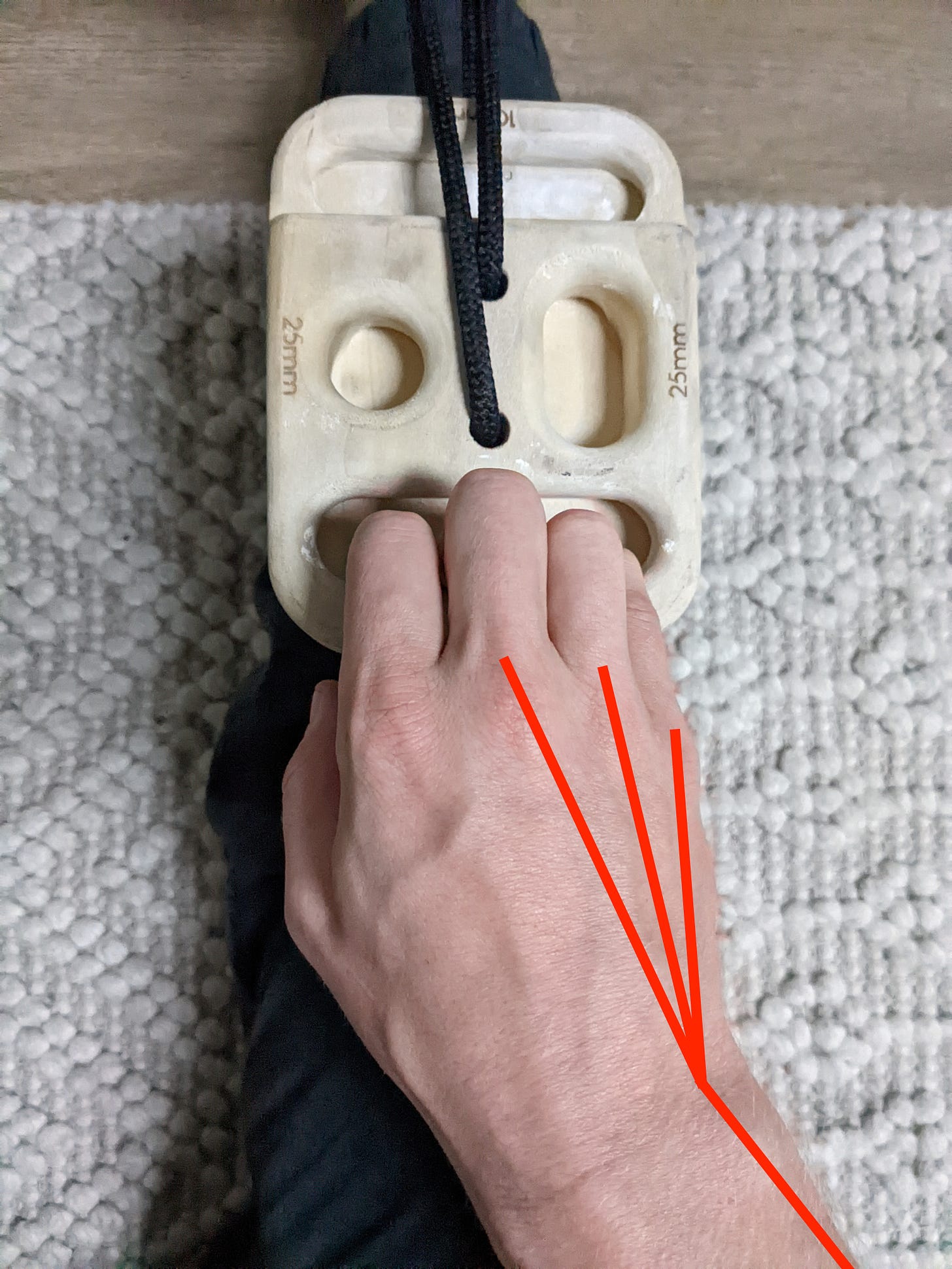
Even though my index finger is still a bit tender in some positions, I’m finding that it doesn’t feel at all uncomfortable while I’m doing the density hangs. While I can “squeeze” the edge with my index finger, something about the wrist or the MCP joint causes me to have a really tough time transferring the weight into my index finger.
Instead, I’ve started experimenting with a much more aggressive 2-finger pull (keeping my feet on the floor).
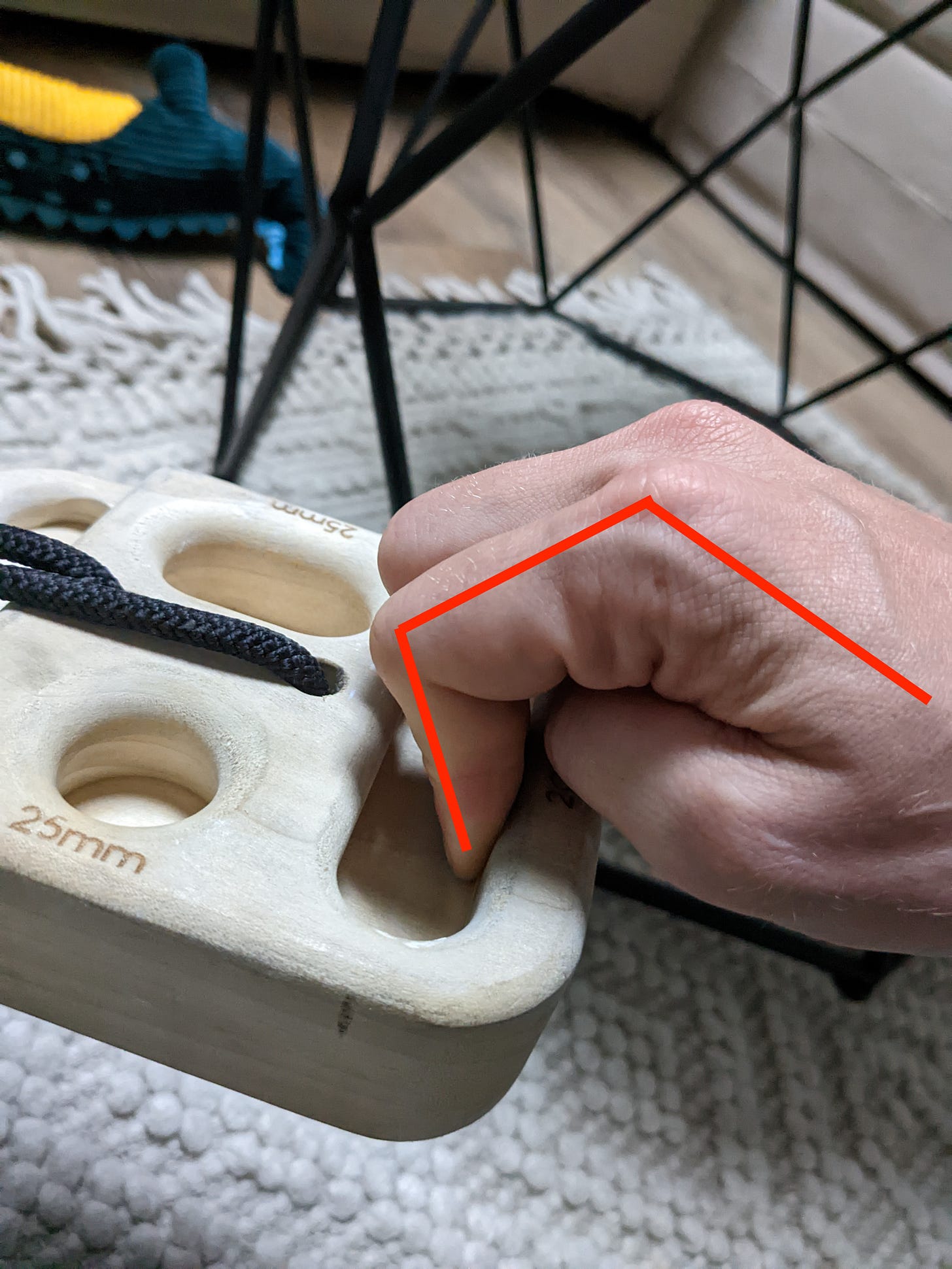
In this position, I’m finding that my index DIP joint stays hyper-extended, though I have to bend my MCP joint considerably to achieve this. This feels like it hits the injured tissue a lot more.
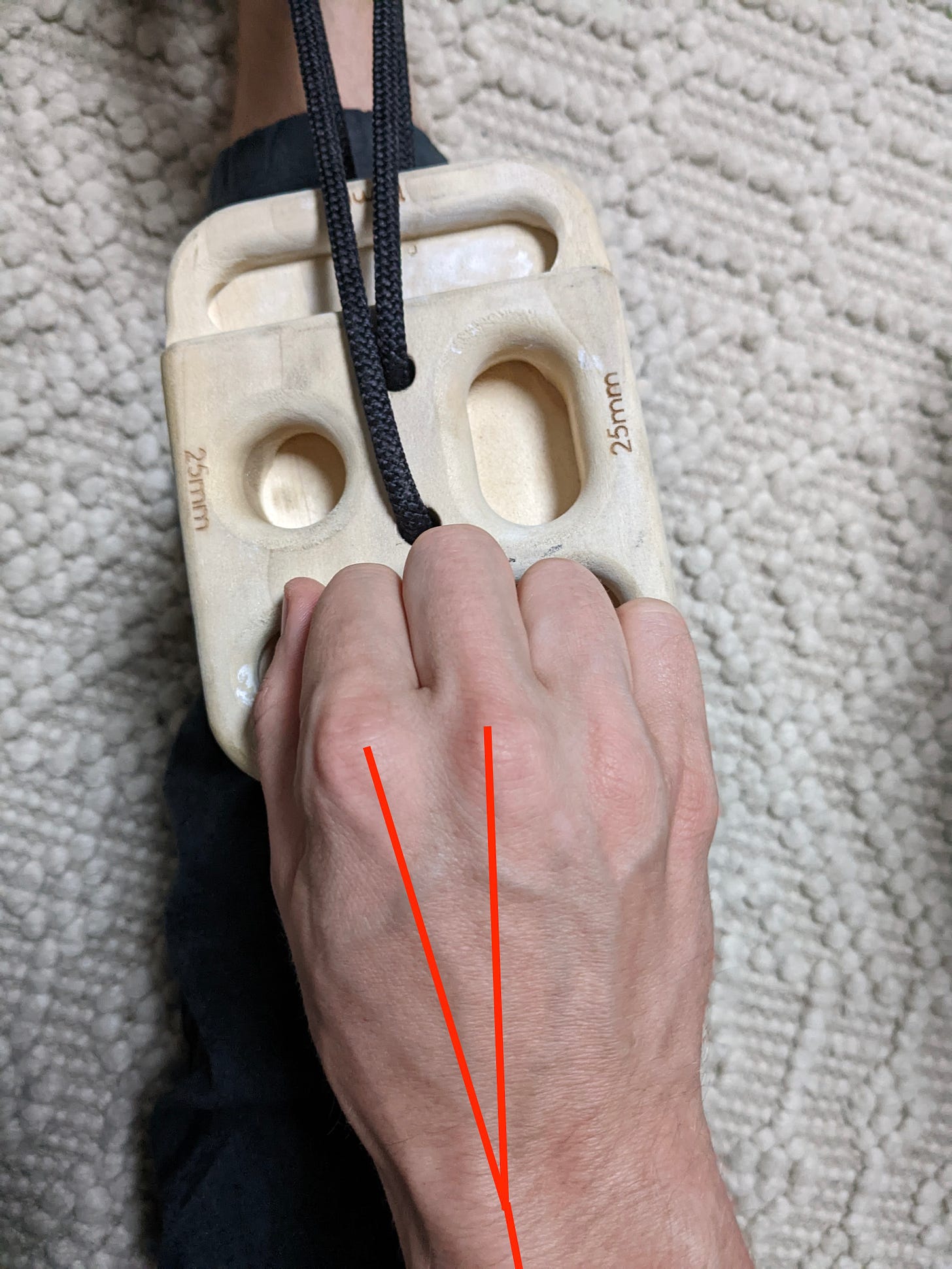
Furthermore, I feel like I’m actually connecting my index finger with the rest of my forearm, and I can feel the force traveling through a different path when I do this, more on the inside part of my wrist and forearm, rather than the outside.
Instead of doing 6x 30s half-crimp hangs, I am now doing 3x 30s half-crimp hangs, and 3x no-hang 2-finger pulls, trying to develop this more aggressive position. I also reached out to my coach about this to see if he has any further suggestions.
I really hope that I can get the injury to fully go away (I think it’s been about 4-5 weeks since the injury). I’m also hopeful that if I can get my index finger fully engaged it will unlock the crimp for me and help me break through my finger strength plateau.
the new routine
3 gym days
I’ve had a lot less stress since switching to the 3-day-per-week schedule. Even though I feel like I’m doing almost as much stuff as I used to, packing it into just 3 gym days reduces considerable time around scheduling, driving and warming up.
I’m still feeling plenty tired and beat up after my sessions, but having a 2-day rest every week is helping a ton with my recovery as well.
Overall I’m very happy with my decision.
technique drills
I was really struggling with my “boulder play” sessions during my first 3 cycles, and now I’m doing open/twisting drills, 1-handed climbing, and eliminates instead.
I really like 1-handed climbing drills, and I’ve done them a bunch before in my own training. It’s nice to have some dedicated time to work on that again.
I have to say that the eliminates feel pretty awkward. I’m finding that I definitely have to do them on vert/slab, and definitely have to be strategic about which problems I choose and which holds I eliminate. It’s really easy to turn my warmup technique drill into dyno practice or limit bouldering.
I feel similarly about the open/twisting drill. In some cases forcing a particular movement severely increases the difficulty of the move and I feel like it’s tough to walk that line between practicing movement and trying really hard.
Overall, I really miss the boulder play sessions! I think I might gradually gravitate back there after gaining some inspiration from these more structured ways of getting at technique and coordination practice.
One thing I’m noticing is that I struggle with feeling out-of-control when higher up on the bouldering wall. I’m really curious about exploring that fear and trying to address it during my future technique work.
consistent but boring vs. flighty but fun
As you probably noticed, I bundled the log into a two-week chunk this time. This is partially because I spent last week writing about Twitter, and partially because I didn’t really have anything interesting to say.
Part of my motivation for writing this blog was to be boring. I wanted to create something to contrast climbing edutainment — to convey that getting better at climbing is a slow and repetitive process. Lately I’ve been finding cracks in my belief.
When I was programming my own training, I really enjoyed tinkering. I liked examining my weaknesses, experimenting, and coming up with new ways to address holes in my climbing. I guess with the technique drills and my hangboarding, I am feeling an urge to do that again. At the same time, in all that experimenting I missed some pretty obvious holes in my climbing. Focusing on hypertrophy, core and power-endurance in a consistent way has really been paying off.
Thinking ahead to what my own training might look like in the future, I think Lattice has given me a pretty solid foundation. I will definitely be including the “staples” of a max effort day, a power-endurance day and a moderate-difficulty-high-volume day. At the same time, I feel like I want to spice things up with esoteric experimentation - trying to deconstruct my grip and tinkering with finger strength protocols; tuning coordination drills; working on motivation and fear; and coming up with strength challenges.
While I still believe that there are only a few principles underlying effective training (progressive overload, specificity, recovery, etc…), climbing is a multifaceted sport, and so the application of those principles to each individual climber becomes a unique and complex puzzle.
So despite my best efforts, I can’t avoid the conclusion that training for climbing is interesting and fun.
For more philosophical bombshells, consider subscribing to my mailing list!